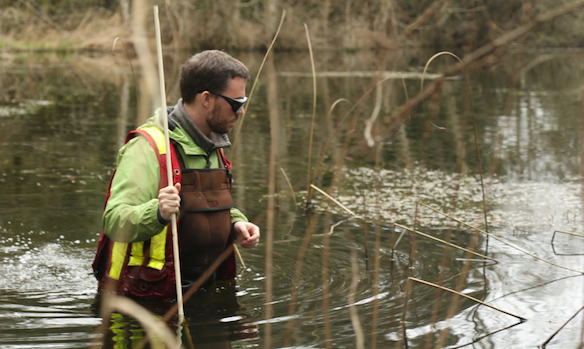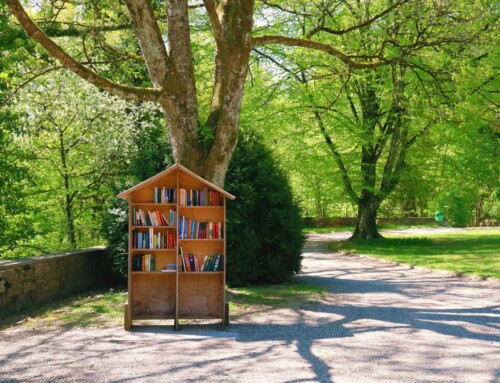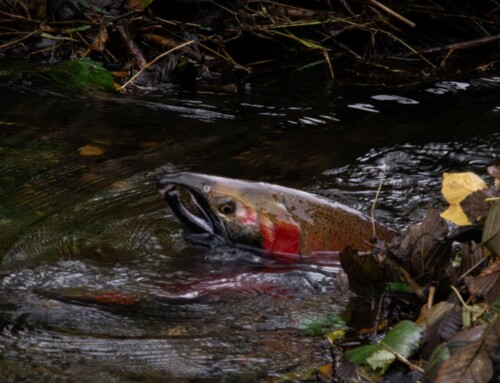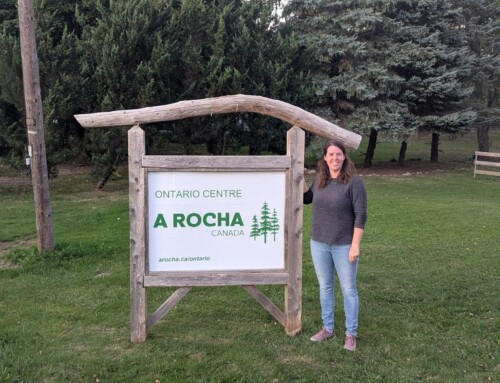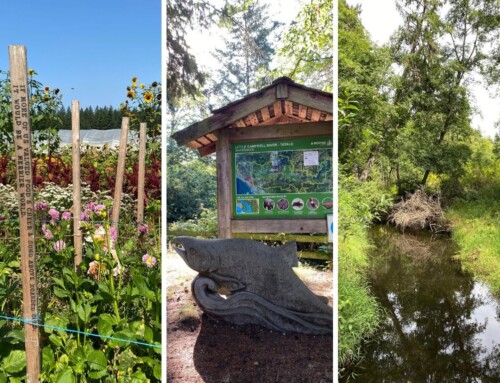It’s that time of year again! The A Rocha Canada Conservation Science Team has begun our annual amphibian egg mass surveys once more in the Little Campbell River watershed.
Our focal species is the Northern Red-legged Frog (scientific name: Rana aurora aurora). This medium-sized frog is blue-listed (considered to be of special concern) in British Columbia. The Northern Red-legged Frog is particularly vulnerable to habitat loss and fragmentation as a result of human activities and development, as well as competition and predation by exotic invasive species such as the American Bullfrog.
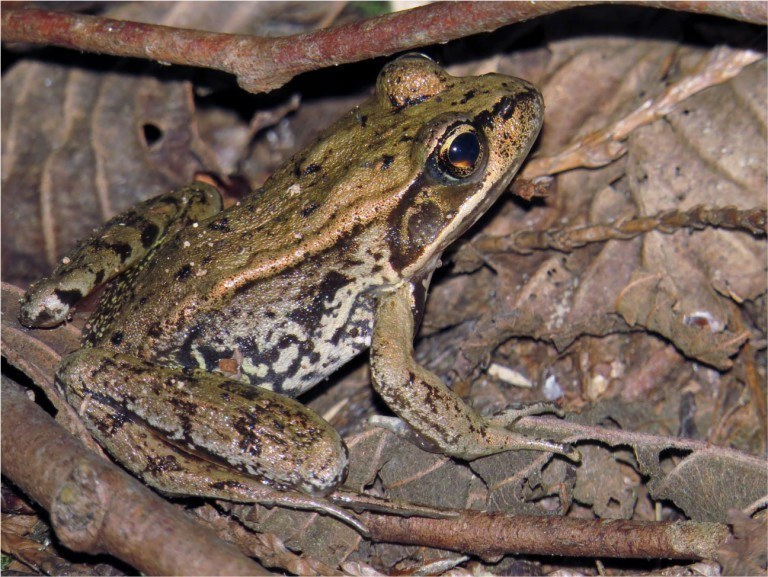
Photo Credit: Corey Bunnell
The purpose of this study is to increase knowledge of the current distributions of this species within the Little Campbell River watershed, to gather information about the occurrence of peak egg mass abundance, and to investigate associations with factors such as exotic invasive species, land use change, and climate change.
Several pond-breeding native amphibian species breed this time of year, including the Pacific Tree Frog, the Northwestern Salamander, the Long-toed Salamander, and the Rough-skinned Newt. Over the last few years, these amphibians have been laying their eggs earlier, likely due to increases in water temperature in their home ponds.
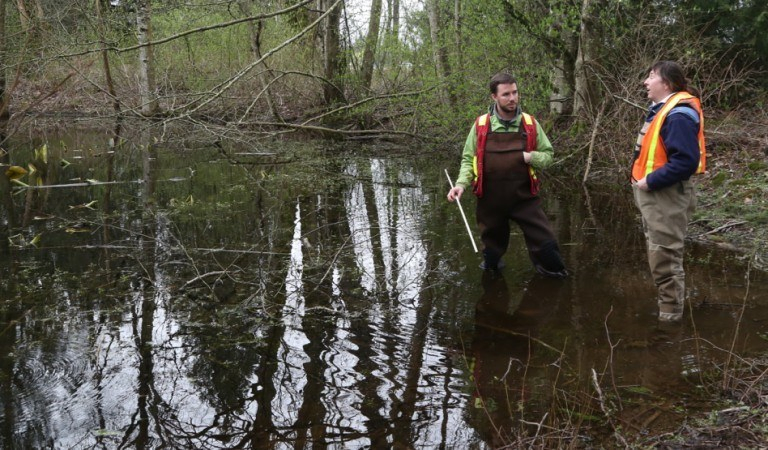
Between February and April, A Rocha staff, interns, and volunteers (alongside many biologists in the area) will be donning chest waders and polarized sunglasses, arming themselves with water quality meters, data sheets, and measuring sticks, and exploring wetlands in search of egg masses.
We hope that by better understanding these animals – who are incredibly sensitive to changes in their ever-changing environment – we may conserve, protect, and restore their populations and habitat, encouraging their survival into the future.
To learn more about Conservation Science in the Little Campbell Watershed, click here.


